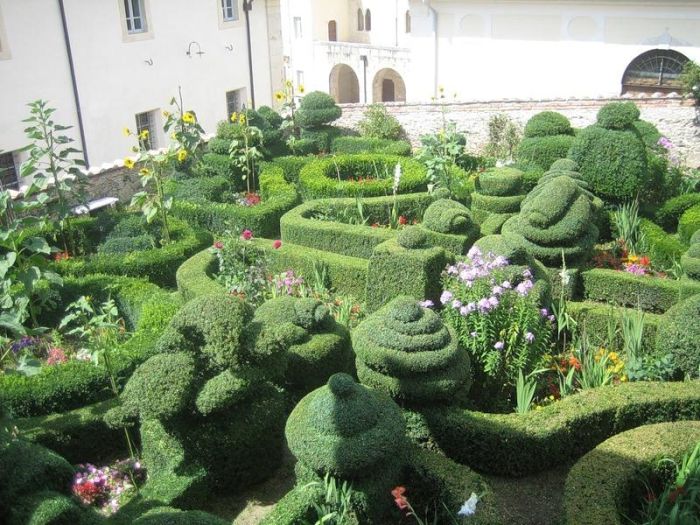|
|
Garden Topiary Plant Art
|
Japanese cloud-pruning (illustration) is closest to the European art: the cloud-like forms of clipped growth are designed to be best appreciated after a fall of snow. Japanese Zen gardens (karesansui, dry rock gardens) make extensive use of Karikomi (a topiary technique of clipping shrubs and trees into large curved shapes or sculptures) and Hako-zukuri (shrubs clipped into boxes and straight lines).
• Renaissance topiary
Since its European revival in the 16th century, topiary has been seen on the parterres and terraces of gardens of the European elite, as well as in simple cottage gardens. Traditional topiary forms use foliage pruned and/or trained into geometric shapes such as balls or cubes, obelisks, pyramids, cones, or tapering spirals. Representational forms depicting people, animals, and man-made objects have also been popular.
Topiary at Versailles and its imitators was never complicated: low hedges punctuated by potted trees trimmed as balls on standards, interrupted by obelisks at corners, provided the vertical features of flat-patterned parterre gardens. Sculptural forms were provided by stone and lead sculptures. In Holland, however, the fashion was established for more complicated topiary designs; this Franco-Dutch garden style spread to England after 1660.
|
|









